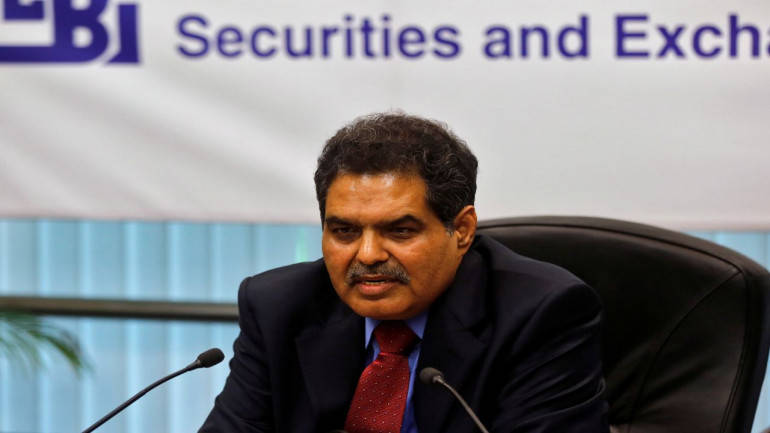A side-pocketing is a diligent and tedious exercise. It needs segregation of illiquid and good assets, and two segment NAVs in the scheme till it is resolved.
Himadri Buch
@himadribuch
Prolonged problems in financial world need financial innovations before they turn into a systemic risk or a market level contagion. This might have been the thought process in the policy-making process of Securities and Exchange Board of India (SEBI) when it brought out the side-pocketing option in December 2018 in mutual funds for distressed assets.
Debt-laden companies such as Infrastructure Leasing and Financial Services (IL&FS), Essel group and Dewan Housing Finance (DHFL) have delayed payments to their investors, consisting largely of mutual funds.
What is side-pocketing?
In December 2018, when the SEBI allowed mutual funds to segregate their holdings in stressed securities, known as side-pocketing in mutual fund parlance, this refers to a practice where fund houses isolate risky assets from the rest of their holdings and cap redemption.
Post the IL&FS distress that first reported during September 2018 and continues, in part, till date, the side-pocketing option was permitted.
Once segregated, a set of units will contain investments made in the troubled paper while the other set of units will contain all other investments and cash holdings.
This will ensure that, if a paper gets downgraded to “default” grade and the fund doesn't receive the money from its underlying investment in time – resulting in a sharp drop in the scheme's net asset value (NAV), the bad asset will then be segregated.
Fall in NAVs
In January 2019, Essel group debt papers were reported to be delaying payment by six to nine months after the due date, but no side-pocketing was reported.
In the latest episode of unpaid interest due by DHFL group on Rs 6,122 crore of debt assets held by 25 mutual funds across 254 schemes, side-pocketing has so far been reported by Tata Mutual Fund in its three schemes, the Corporate Bond Fund, Medium term Fund and Treasury Advantage Fund.
On June 4, the day of DHFL’s non-interest payment, the NAVs of these three Tata MF group schemes were 1600.3188, 24.9094 and 2758.1194 respectively. As the side-pocketing was carried out via a press release, the respective NAVs improved to 1601.4550, 26.5996 and 2759.7956 as on June 6.
Due to no side-pocketing by other mutual funds, the NAV of other schemes has been hit by a write-down to the extent of 40-50 percent. UTI mutual fund and a few others have taken a compensatory route of allowing exit without the load for redemptions but have not done side-pocketing.
Not yet side-pocketed?
So, what stops mutual funds from side-pocketing? “DHFL has asked for seven days’ grace period, we will wait for seven days. If they default, we will think of side-pocketing,” said a fund manager from a private fund house. Reliance MF said they had not done any side-pocketing and marked down the valuation which led to fall in the NAVs.
A side-pocketing is a diligent and tedious exercise. It needs segregation of illiquid and good assets, and two segment NAVs in the scheme till it is resolved. Perhaps, mutual funds have avoided the exercise based on DHFL group’s assurance of payment within the grace period.
There appears a strong case of side-pocketing exercise within time instead of panic exercise later. The sheer size of AUM with DHFL debt papers makes it doubtful if DHFL would make payments of all interests simultaneously. A further delay may be likely in some of the 254 schemes.
“A steep fall in NAV due to illiquid partial assets which were below the AAA ratings, thereby making the NAVs slide was faced by mutual funds in their liquid schemes and short term funds during the global liquidity crisis of 2008, “ said a former DGM of SEBI who worked in its mutual funds department during the global crisis period.
The ex-SEBI official also pointed out that MFs have not learned lessons from the 2008 episode of keeping large amount of below AAA rated papers in each scheme and have been recklessly chasing yields landing in the current situation putting the entire scheme at risk.
It's high time mutual funds adopted a timely side-pocketing exercise, already permitted by SEBI as a proactive measure before the current liquidity crisis turns into a contagion spreading across the debt segment of mutual fund industry.
Inter scheme transfer of liquid papers should not be resorted to as it hurts investors of other schemes where the illiquidity problem does not exist. Mutual funds also need to be diligent on the proportion of low-rated papers at the scheme level.
Not sure which mutual funds to buy? Download moneycontrol transact app to get personalised investment recommendations.
First Published on Jun 8, 2019 02:38 pm
















